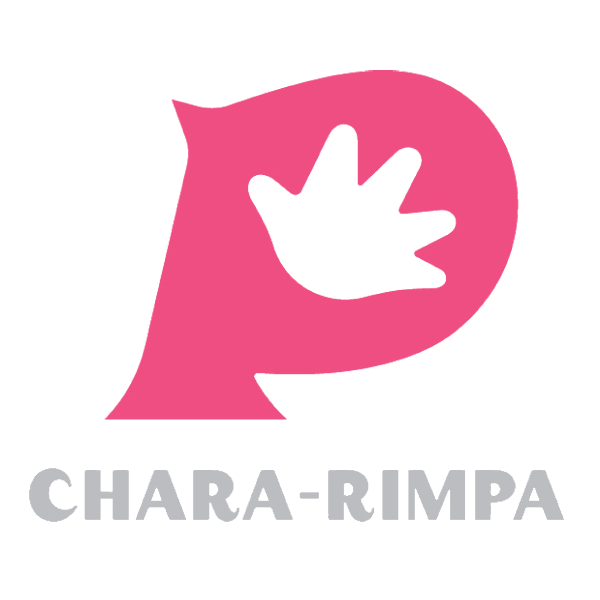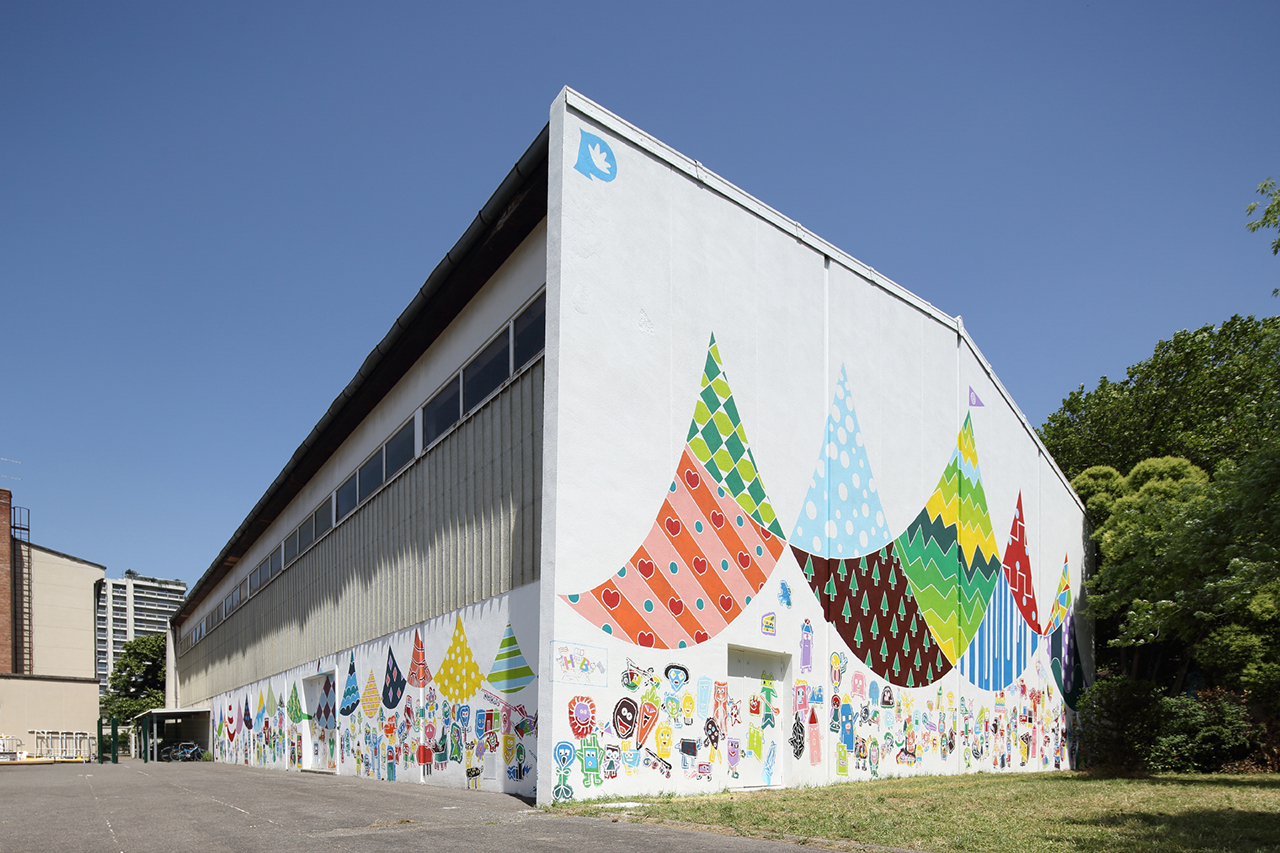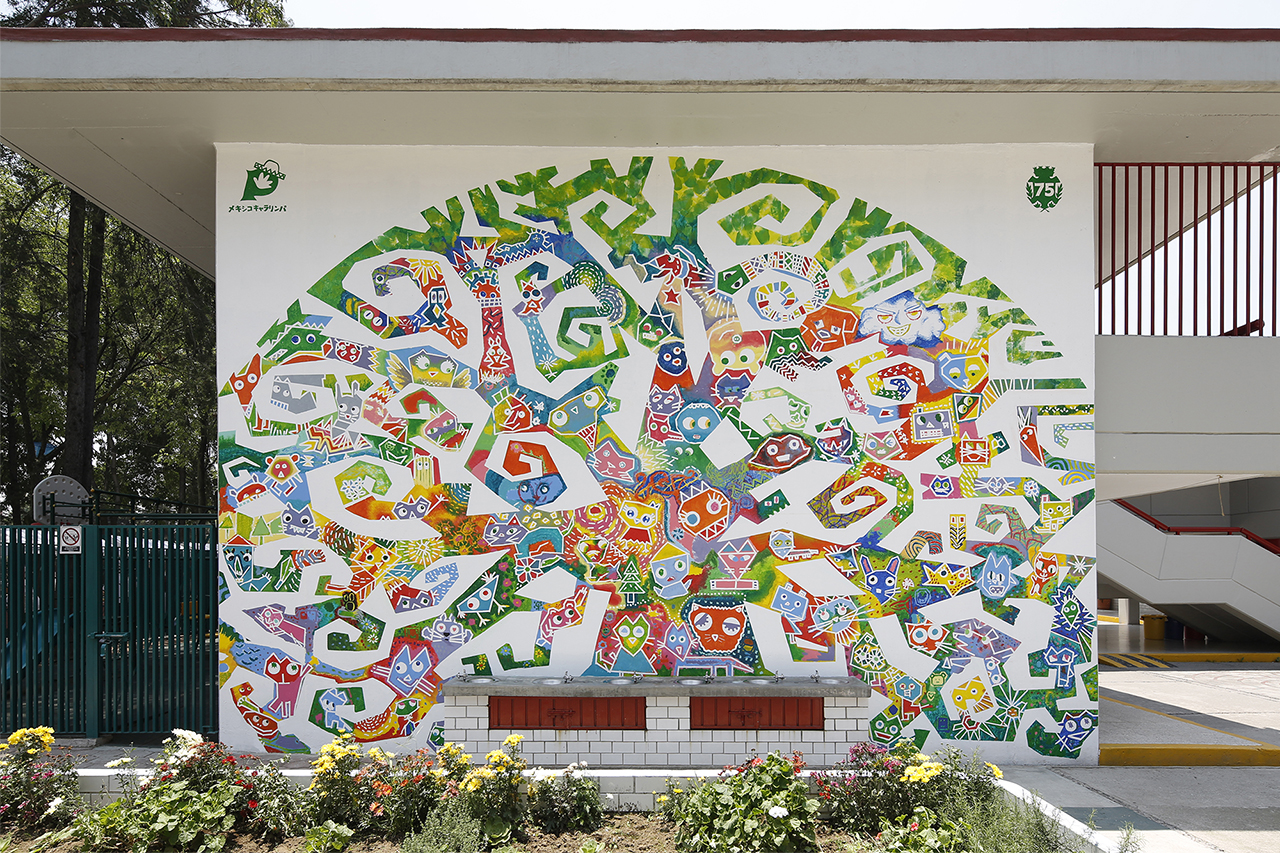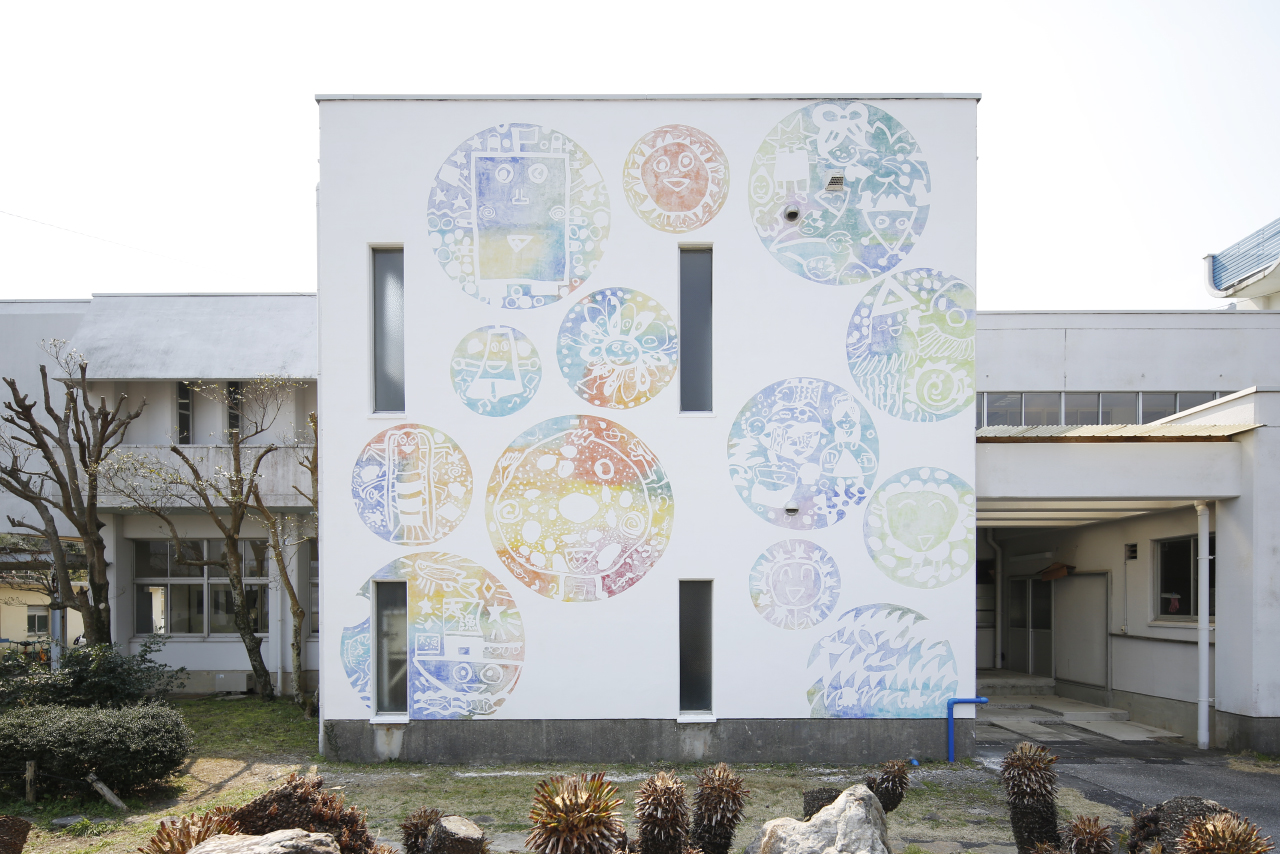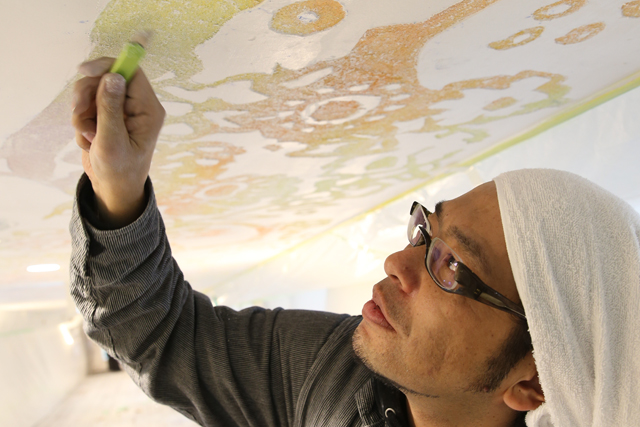Procedure for Water-based Paint Mural
+ Special Workshop
Deciding on the Mural Site
Size of the wall = The larger the wall, more impactful the work becomes.
For a 5m wall ~ about 10 to 20 students for 1 hour with 2 to 5 adult helpers. (More adults are needed to help the students if they are younger.) Scaffolding of some sort is usually needed.
Choosing the participating children’s group
We have worked with children in groups of 25 to 250. Usually, 10 to 30 children work at a time for about one hour.
Proposal of Mural Design
After deciding on the site and the number & age of children, our artist and designers team will design the mural; usually within two to three weeks.
Once you agree on the mural design, we will set a schedule of mural making allocating a particular group of children and adults for certain time period.
In addition to mural making, we would like to offer some cultural exchange arts workshops.
It takes two days for mural making unless the size of the mural is much larger than those we have created so far. The first day is for preparation and the second day is for drawing & painting.
Cultural exchange arts workshops.We ask all the participants for the permission beforehand regarding the use of their photos to be posted on our web site & on our brochure.
